After 3 months of work by a small dedicated team of volunteers, our new outdoor target sports range and enclosed activity was completed and opened for use on 12th November 2022 at our Queen Charlottes Wood Activity Centre (QCW). Our Draco Explorer Scout Unit being the the first to use the facility for an afternoon’s air rifle shooting as part of their weekend camp at QCW on the 22nd November.


The Big Build
Work on the new range started on the 12th August, straight after the return of our District Shooting Advisor who had been supporting shooting at Cheshire Scout’s International Scout Jamboree (Chamboree).



The major groundworks were undertaken by South West Cheshire Services, whose owner is also the Shooting Advisor for South West Cheshire Scout District, The groundworks required the clearing and levelling of a natural “bowl” located beside our existing campfire circle to form a level area approximately 15m wide and 25m in length. This would provide for an activity area 11m by 17m, covered hardstanding 10m by 3.6m and path 1m along the back of the hardstanding to provide access to the activity area and the existing campfire circle.
In order to provide a level surface and firm base to build on, earth and sand were excavated from the rear of the site and moved to raise the front by approximately 1.8m so that the hardstanding (firing point) and access path would be level with the entrance to the existing campfire circle (see picture below). Part of the excavated soil was also used to regrade the slope from the hideaway to the campfire circle to improve its accessibility by removing the tight turns and a steep gradient in the existing path taking into account the physical constraints of the location.


A trench was dug from the Hideaway up to the campfire circle and ducting laid to provide power and networking to the campfire circle and new range. A water connection was also laid to provide a water tap for the campfire circle.



Once laying the ducting and pulling of cables had been completed, the foundations for the hardstanding (firing point) and storage unit were commenced. The subsoil , sand layer and MOT subbase were each compacted to form a solid foundation for the concrete pads. Shuttering was put in place ready for the concrete to be added.



By 28th August the membrane and reinforcing mesh was put into the shuttering then filled with concrete and levelled. An onsite mixer with concrete pump were used to mix and move the concrete into the shuttering. A vibrating bar was used to level and remove air from the concrete. Just before the concrete set the surface was brushed with a stiff bristled brush to give a rough surface to improve grip, and the edges hand troweled to give a rounded edge around each pad.



Whilst the heavy groundworks was being undertaken by our contractor, our team of volunteers installed post and half rail fencing around the outside edge of the area to form the safe zone boundary for the range when it is in use.



To improve the drainage of the area, the existing land drains were extended around the outside edges and also under the range area; around 100m of additional land drains were laid. Surface water drainage channel was laid along the front edge of the concrete pad to remove runoff from the hardstanding and a roof drain gulley for runoff from the sloped roof.

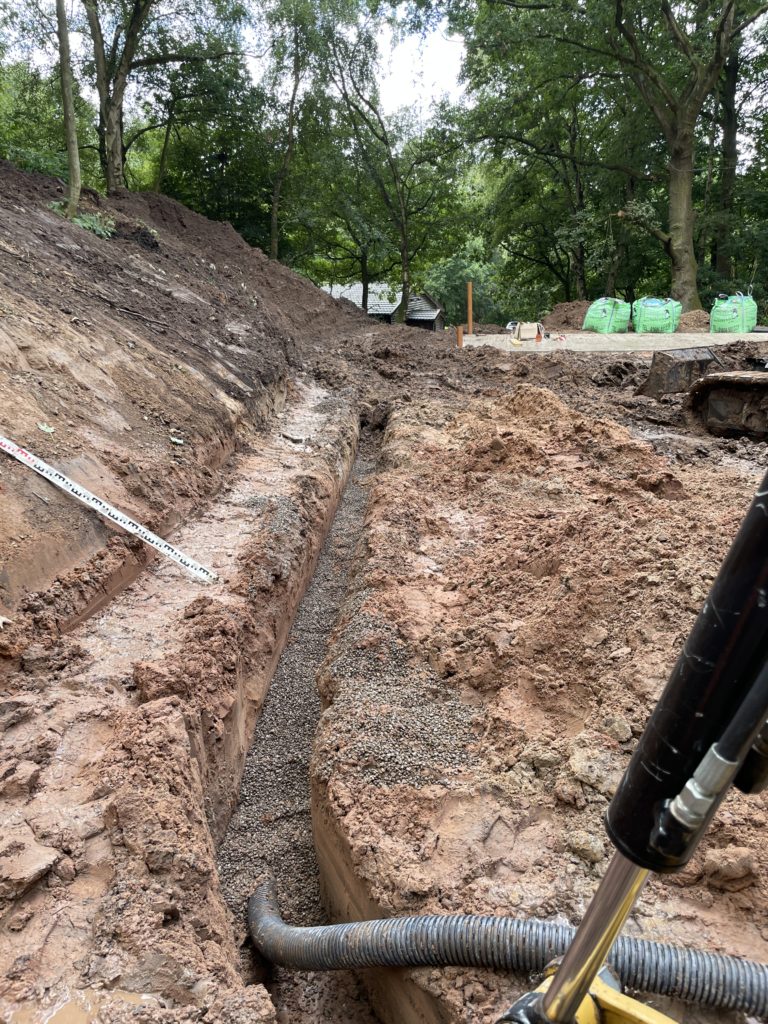
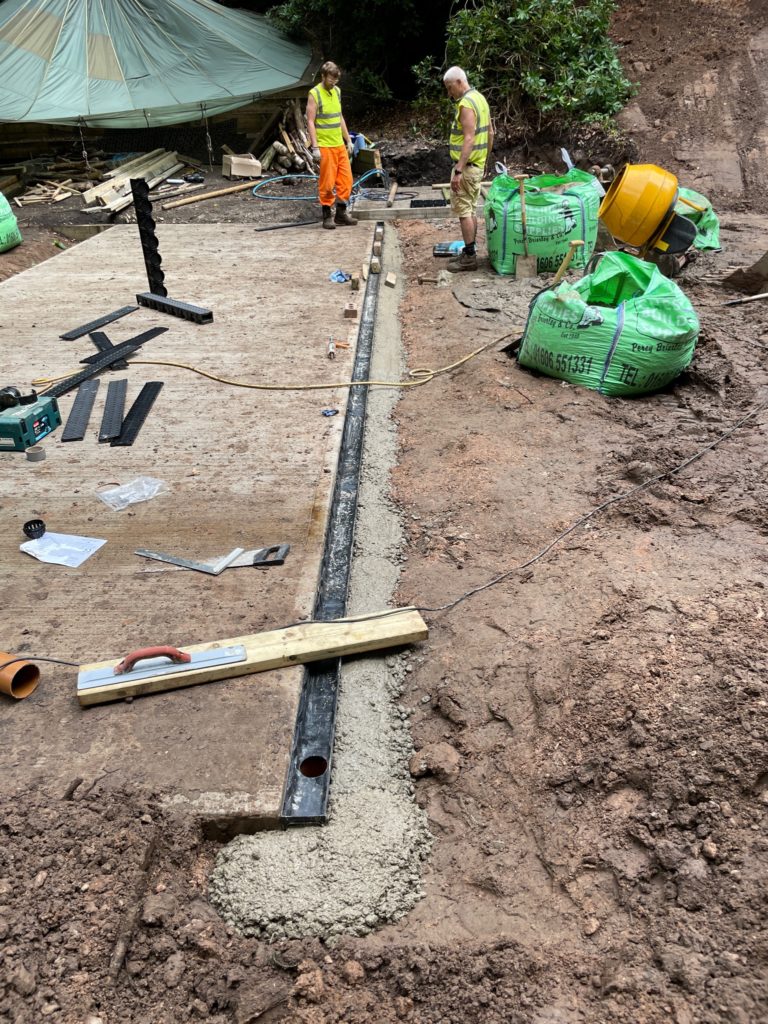
All the drainage water was connected into the existing site water drainage system.
During the last week of August, levelling of the ground to form the surface of the range and activity area was then commenced, along with regrading the approach from the Hideaway to the range and campfire circle.



By the 31st August, the top surface for the paths and range area which consisted of geogrids backfilled with soil for the range surface, or pea gravel for the paths, was completed. The geogrids provide a stronger, firmer walking surface in all weather conditions, which is SUDS compliant and also better for wheelchair users.

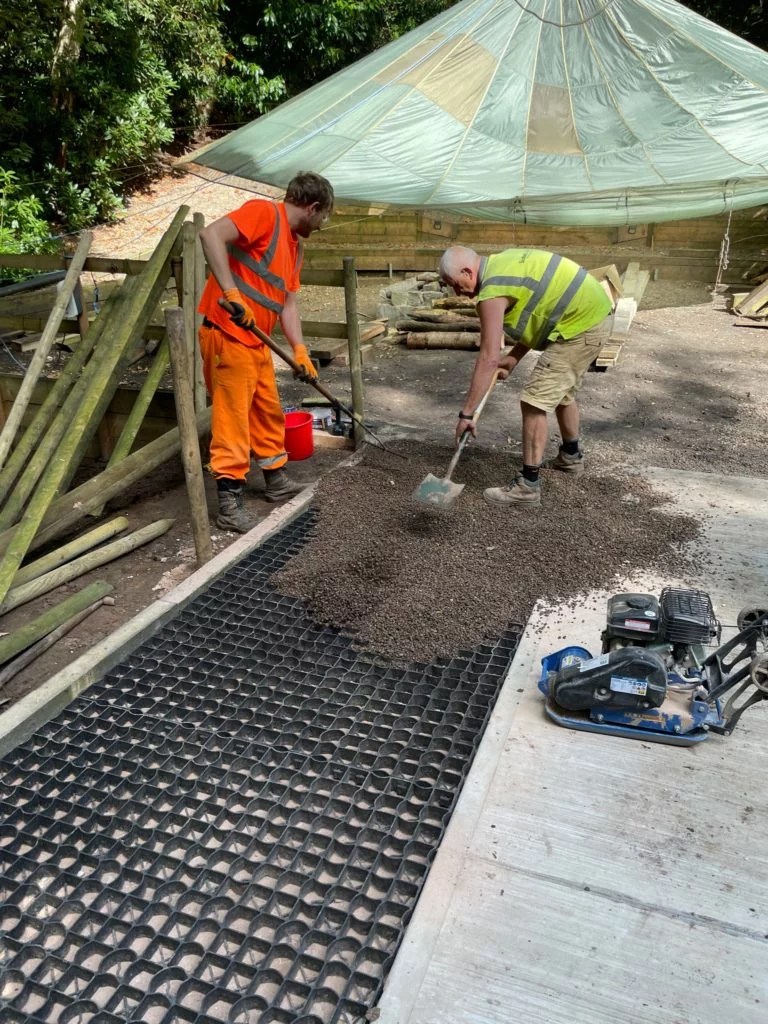
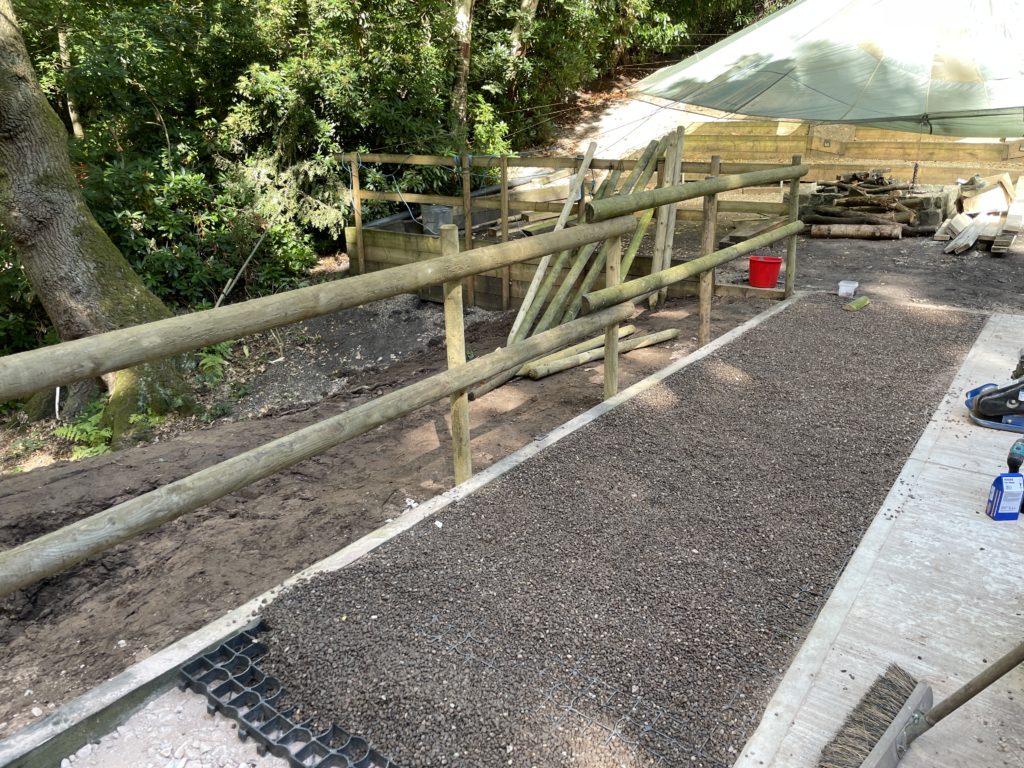

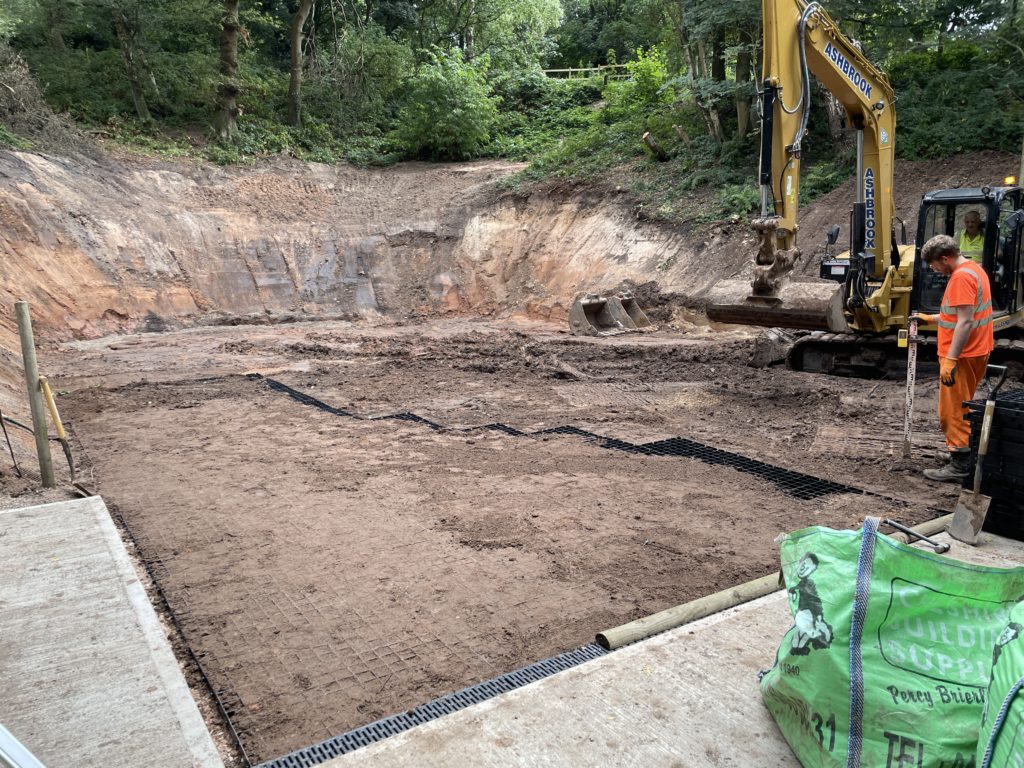




One evening in the first week of September , our volunteer team then swung into action again, to build the secure storage container by the firing point from a flat pack container pack. The 6 volunteers completed the move and build in under one and half hours and finishing in the dark with the help of a portable flood light (it was just one of those moments when some suggested “as we’ve moved it, we may as well build it!” to which everyone said “go on then, lets do it”). Grass seed was applied to the banks around the range and beside the path up to the range, with the weather conditions being a mix of rain and heat it was sprouting within a few days and by the following week was making good progress in covering the bare areas.



On the weekend of the 17/18th September, our volunteer team then built the framework for the sloped roof and half height walls around the sides and back of the firing point.








Work on batoning and sheeting out the roof and half height walls took place during the following week.





By late October, the area was enclosed by fencing built all the way around the sides and back of the range/activity area using DuraPosts and oak boards to match the character of the location and provide a longer service life than softwood fencing. Around 250 oak boards were cut to size and routed to slide into the DuraPost channelling.
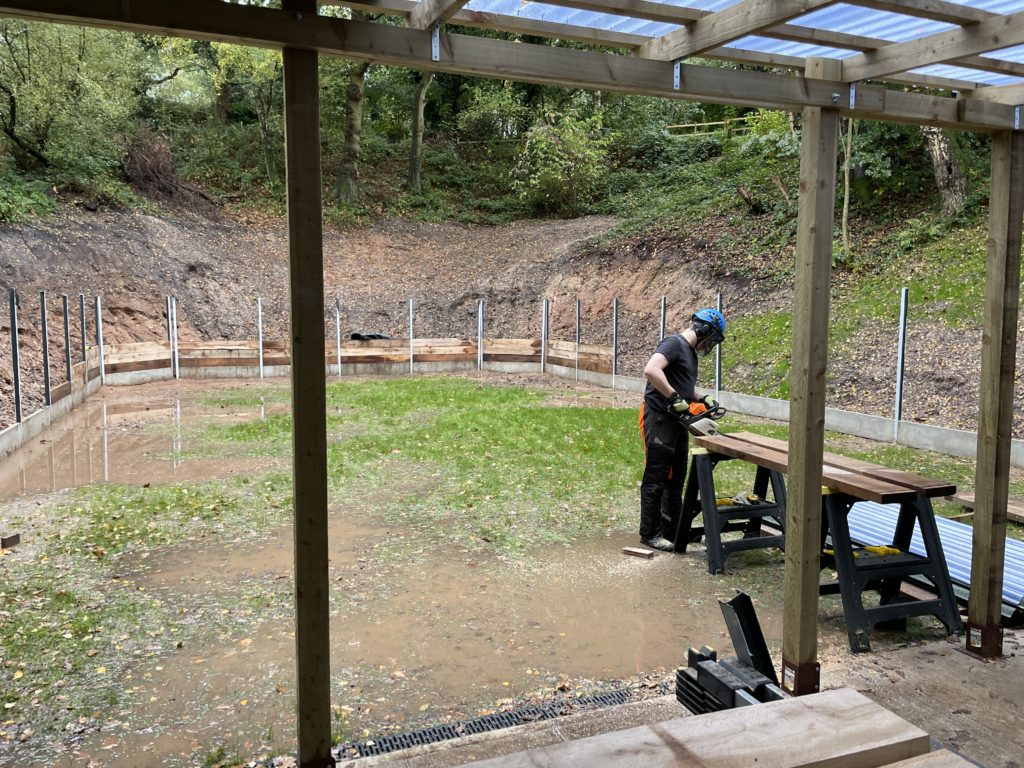
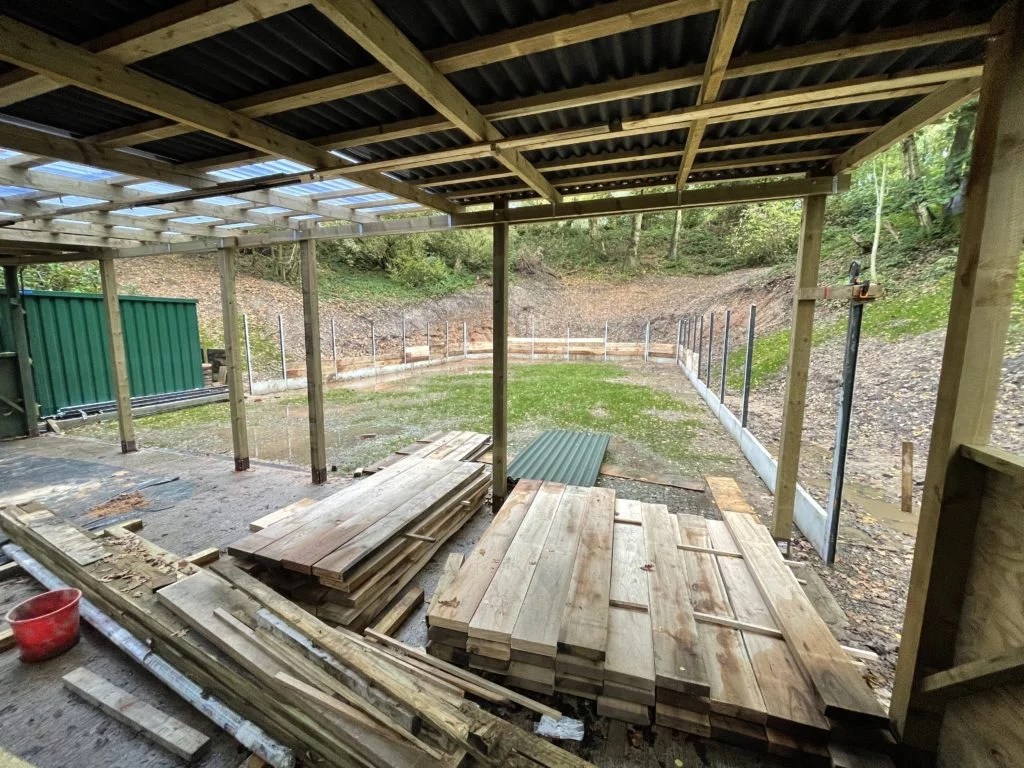
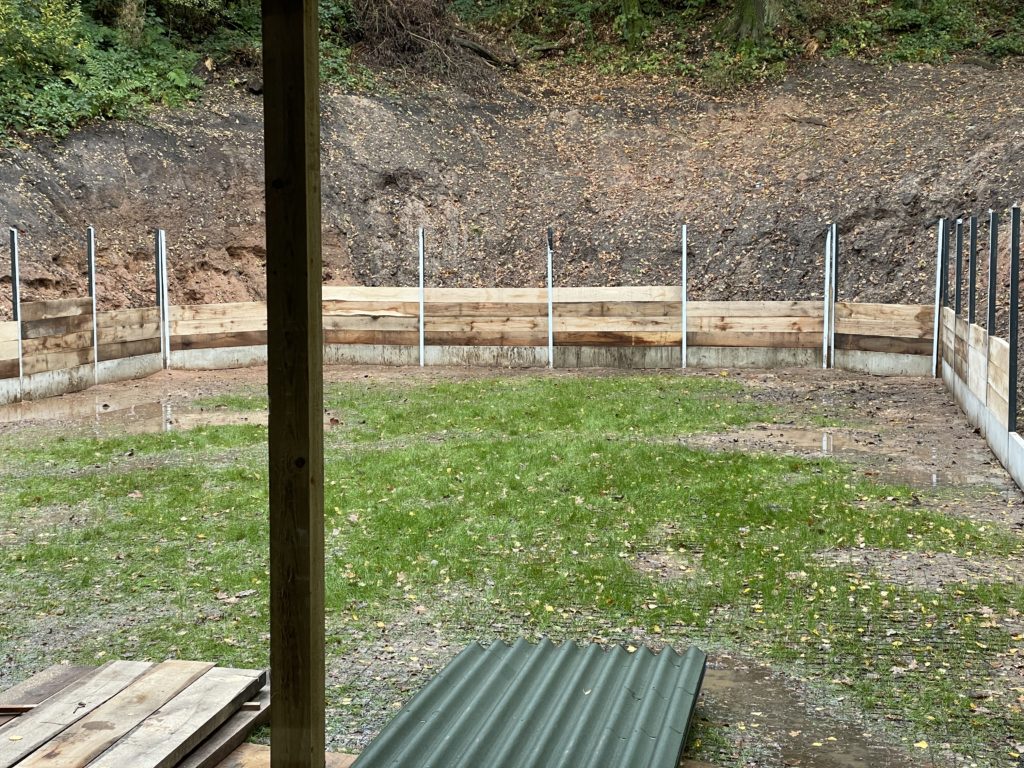
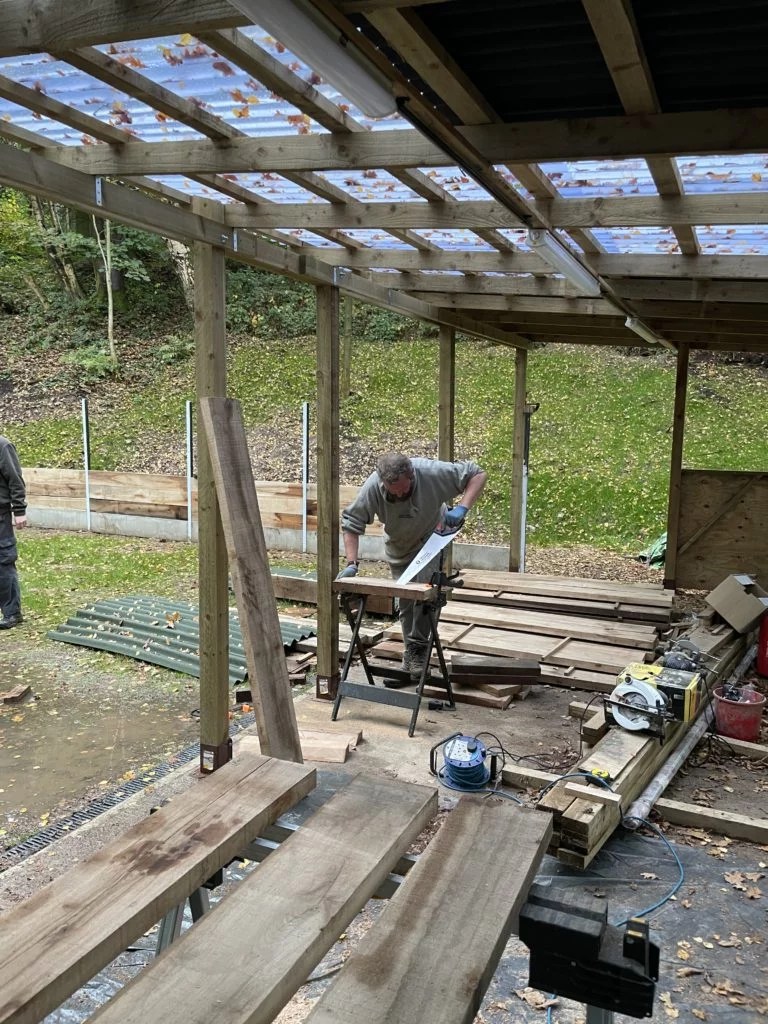



In late October and first week of November, the electrical and lighting work had been completed along with construction of 6 mobile target bosses (90cm square).





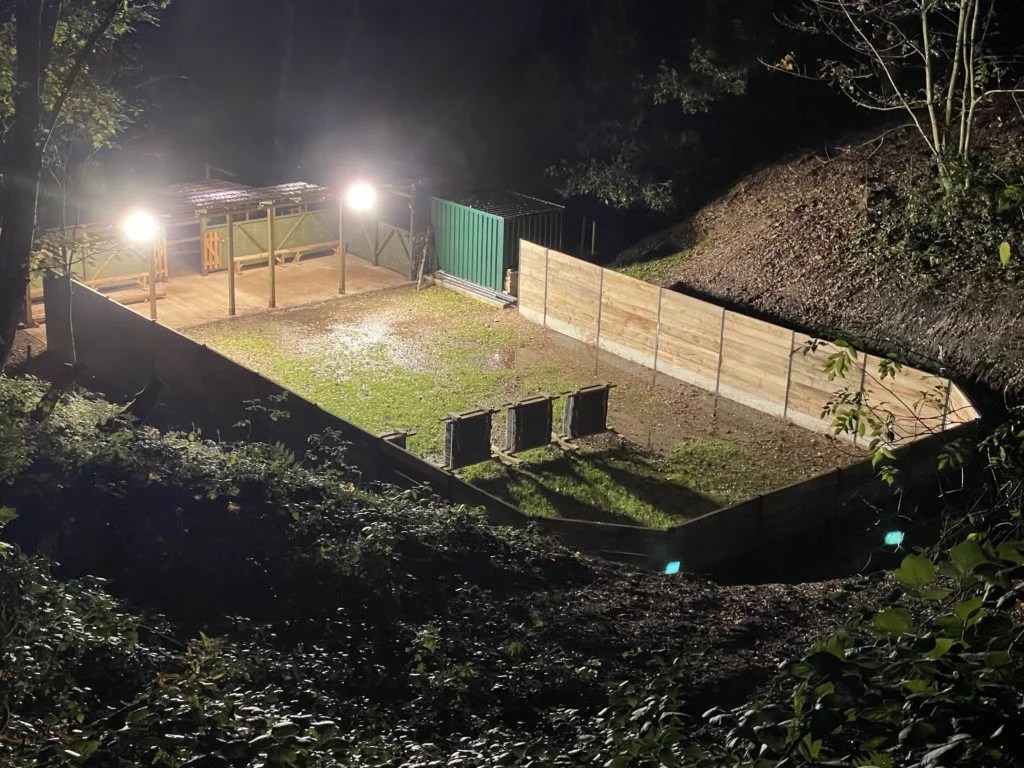
Making most use of the materials
Over the course of the project and with the ingenuity of those involved, ways were found to utilise offcuts of materials and increase the usability of the area in poor weather condition, examples being construction of wooden benches from offcuts of the oak boards (example in picture below), re-purposing the pallet which the roofing sheets came on to use as a removable side barrier (see picture on right below – the section on the right waiting to be painted), the oak strip supports on which the oak boards came have been used to convert two static target bosses into mobile ones, and the use of clear vinyl tarps as rollup windows above the half-height walls to prevent ingress of rain which are held in place using bungee cord and trailer cover hooks (righthand picture below – above the green painted half height walls).


Our Thanks
Thanks go to the small core volunteer team who dedicated their time and skills to support the delivery of the project which was delivered within the target 3 month timeframe. Particularly, Brenden, Declan and Duncan Edwards; Paul Cummings, and Reggie Bowden, Our thanks also goes to Ben Nugent, Brian Doran, Charlotte King, Charles Lambert, Jonathon Walker, Matt Morris, Oliver Chambers, Paul Cartwright and Ross Heaton.
As project manager, I would also like to thank Andrew and John Brookes of South Cheshire Service who exceeded our expectations in the work they did on the project and their dedication in solving some of the challenging ground issues to help to achieve our project aims. Also, John Morris for the electrical support.
We would also very much like to thank the Marshes Community Benefit Fund without whose grant this new facility would not have been possible.
Colin Chambers, District Shooting Advisor and Project Manager.














